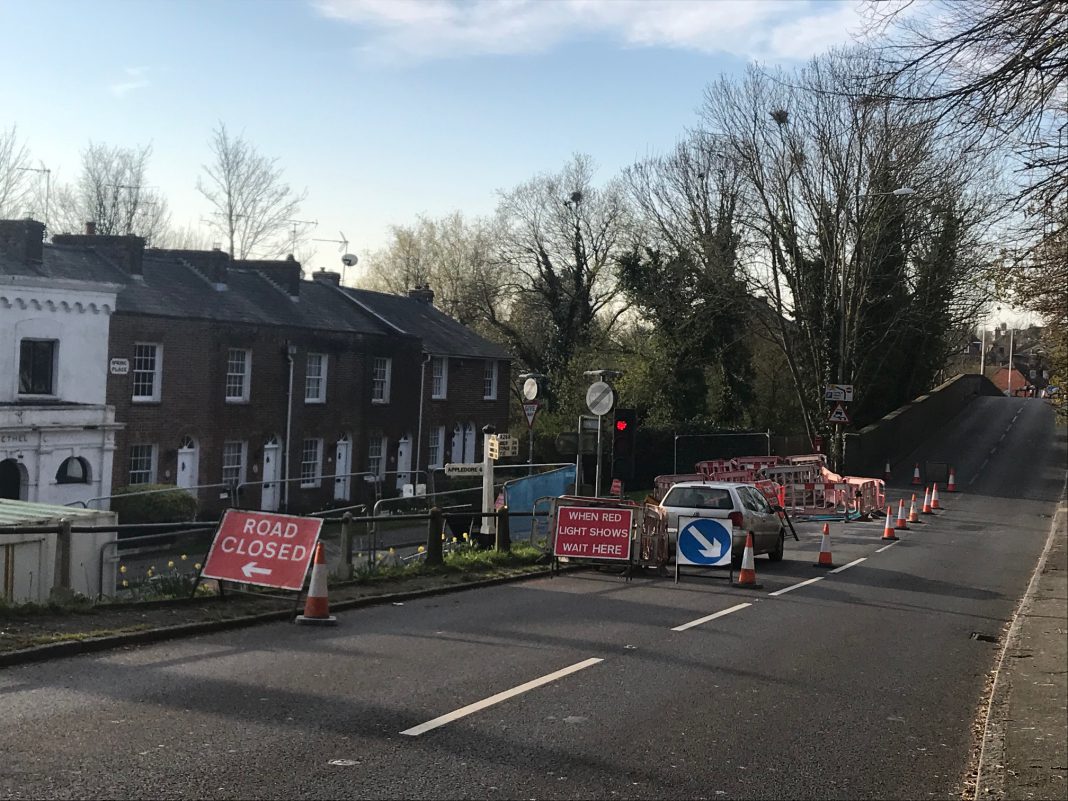Every town has traffic lights, even Rye, where many of the streets are better suited to horse drawn carriages. They had to start somewhere and London is where they did.
London has always been congested with traffic. Pedestrians take their life in their hands to cross the road. In 1803 three people were crushed to death by coal wagons in a traffic jam caused by a broken carriage. During the 19th century about five people a week met a gory end under wheels or hoofs.
Two hundred years ago, we know that on an average day, London Bridge would carry about 5,500 wheeled vehicles, nearly 100,000 pedestrians and more than 1,000 horses. About 27,000 commuters were heading into the city, to join the 250,000 already there, who went to work by foot or horse drawn vehicle. According to Louis Simond, an American-French visitor to England between 1810-1811: “In the West End the noise was a universal hubbub; a sort of uniform grinding and shaking, like that experienced in a great mill with fifty pairs of stones.”
To make matters even worse than they were, traffic regulations were either non-existent or contradictory. What applied in one street didn’t necessarily apply in another, whilst major intersections were something of a free for all. When there were rules, very few obeyed them. Action was needed or increasing traffic numbers would result in an increased slaughter of pedestrians.
Along came John Peake Knight, a railway manager. He was something of a safety specialist, the first person to have railway carriages lit by electricity rather than other, more excitingly combustible means of illumination. He was also a pioneer of a bell pull system on trains, to allow passengers to call the guard in case of emergency. Turning from rail to road, in 1865 he suggested that the semaphore signals already used on the railways should be adapted to control the flow of pedestrians and traffic.
The Metropolitan Police liked the idea, and it was approved by Act of Parliament in 1868. The police commissioner, Richard Mayne caused 10,000 pamphlets to be distributed to explain the new system. The semaphore arms would indicate when to cross during the day, with red and green gas lights at night. The whole to be operated by a policeman.
There were questions about the right of a policeman to delay traffic. On December 9, 1868, the first ever traffic light was set up in Parliament Square. The crossing was especially difficult. Two members of parliament had already been knocked over there, and a policeman killed.
A modern traffic light is something of an ugly duckling compared to the majestic 20 feet tall lamp of 1868. It was described thus: “Gothic panelling at the base supported a hollow cast-iron pillar, painted green and relieved with gilding, which then evolved into a thick metal coil, encompassed at the top by acanthus leaves which appeared to be growing out of an octagonal box containing the lamps, itself finished with a pineapple finial.” The media loved it and predictions were made about a lamp on every corner. The excitement was to be short-lived!
At first all went well. In early 1869 an article in the Illustrated Times noted that: “The regular drivers are fairly, and to quite an unexpected extent, amenable to the signals, whether caution or the absolute stop.” A difficult pedestrian crossing was now safer, and Knight spoke of lights at every major crossing.
The problem was the gas supply for night-time use. In January an undiscovered leak under the pavement made the hollow tower fill up with gas. The unsuspecting policeman on night duty lit the lamps – and according to different sources was either severely burned or killed. The whole structure was soon dismantled. No further traffic lights were built until 1925, when a safer, electric model was put into use. The first automatic lights were introduced in 1926. It was certainly safer, but not the thing of beauty that the first lamp had been.
Image Credits: Nick Forman .



